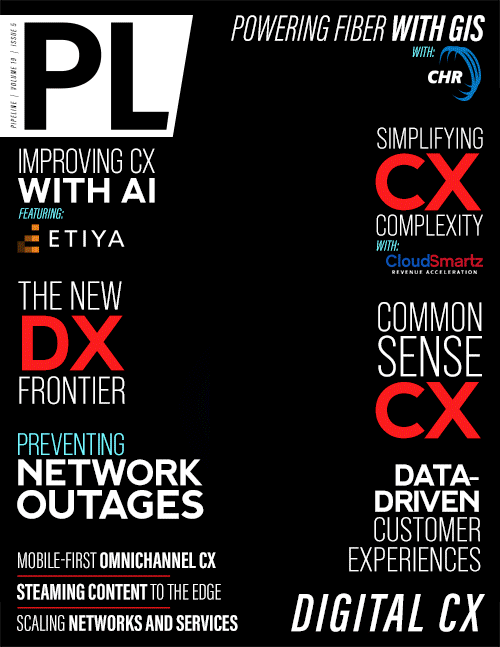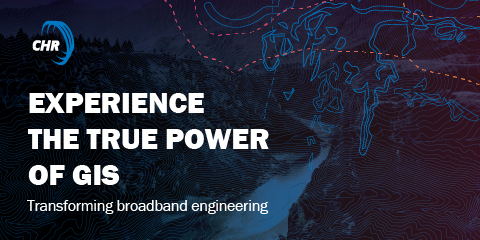Innovative Mapping Tools Power Your Fiber Project
By: Dustin Heath, Director Operations and Technology - CHR Solutions

Do you remember what it was like to go on a road trip before the Internet? You planned your route using your fold-out map or road atlas, and you relied on a separate guidebook for suggestions of restaurants, gas stations, and rest areas along the way. What that system couldn’t do is tell you if a road was closed for construction, if there was a speed trap coming up, if your favorite eatery had closed, or whether the cost of gas was less expensive at exit 77 or 79.
Compare that experience to using an app like Google Maps. Your entire driving route, up-to-the-minute information about driving time and road conditions, details for local businesses and places of interest, and other features are built into a seamless experience. Why would you ever go back to doing it the original way when the new tools we have make the trip so much better?
Fiber broadband deployment planning
This difference between the old way and the new way is what it’s like when you use geospatial technology to design and build your fiber broadband deployment. Here’s how it used to work: Techs working in the field would enter recent construction and network information—which addresses had been passed with fiber, which areas were ready for the next step—into a spreadsheet. A separate spreadsheet might be kept by design and planning with information about the status of permits. Your finance department had their own spreadsheets. When it was time to assess project status and various key performance indicators (KPI), an employee would painstakingly combine the information from multiple sources—with information that was likely weeks old—into new reports to present to the executive team. Creating KPI reports was time-intensive and offered information of limited usefulness because it was out of date by the time the report was finished. This is the old way, the fold-out map and printed guidebook equivalent of running a fiber project.
Using geographic information system (GIS) technology on a user-friendly platform for your fiber deployment makes a profound difference. The United States Geological Survey defines GIS as “a computer system that analyzes and displays geographically referenced information.” In other words, GIS is essentially a digital combination of mapping and data tools. GIS isn’t a new concept—what’s new is geospatial mapping data combined with accessible digital dashboards on a single platform that helps you plan and track your broadband deployment.
Building the Future of Broadband
CHR Solutions offers products and services that enable better broadband. We specialize in Broadband Engineering services (including outside plant and network design), Cybersecurity
and Network Monitoring solutions, and Business and Billing Software solutions that address the operational and marketplace challenges faced by today’s Broadband providers. For more
information visit chrsolutions.com.
Applied correctly, geospatial data can increase the efficiency of your fiber project, giving you real-time information about permits, connectivity, construction, and more. As you enter data into the system, KPIs around planning, design, construction, and more are updated automatically based on what field personnel have collected or what has been designed. The result of applying geospatial data to a fiber build is improvements in several areas: user accessibility, efficiency of materials acquisition and budgeting, digital automation, interdepartmental communication, and customer experience. Let’s look at each of these in turn.
User accessibility in geospatial technology
Accessibility is one of the most significant advantages of geospatial technology. Your team has access to project information in a visual format—tied to a map showing areas of construction—that is easy to understand. Dashboards can show where the network is fully connected and allow users to drill down to see the status of unconnected areas, including information about the status of permit applications, the materials needed, the construction schedule, and more. Dashboards present a user-friendly graphical interface that lowers the bar of entry for your team. The dashboards and their details are now accessible by anyone in the company who has the permission to view it. A user doesn’t need a GIS degree to see how many miles of network were connected this week, and reports don’t rely on a GIS manager. Now, the status of your fiber project—overlaid on a map of your construction area—can be seen and understood by nearly anyone.
Efficiency of materials acquisition and budgeting
It used to be that the financial numbers that appeared on reports were last month’s numbers, or maybe from just two weeks ago if you were lucky. Dashboards can be created to include financial information that lets you see budget issues and react more



















